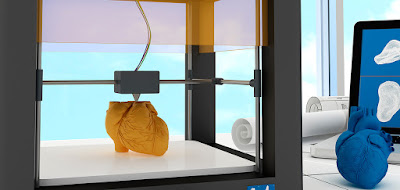Radiation detectors are devices for measuring nuclear, light or electromagnetic radiation, also known as Geiger counter or particle detectors. It consists of two main elements such as processing electronics and the Geiger tube. The Geiger tube is filled by a low-pressure inert gas like argon, helium, or neon. It also measures the emission of ionizing radiation of alpha (α) particles, beta (β) particles, and gamma (γ) rays.
According to the study, “Global Radiation Detector Market 2019 by Manufacturers, Regions, Type, and Application, Forecast to 2024” the companies operating in the global radiation detector market are MIRION, Thermo Fisher Scientific, CanberraOrtec, Nucsafe, Industries Inc., FujiFilm Holdings, Leidos, Hitachi Healthcare, Xi'an Nuclear Instrument Factory, Coliy, CIRNIC, Hologic, GE Healthcare, Eco test, Weifeng Nuclear Instrument, Shimadzu, NUC-SAFE, Toshiba Medical Systems (Cacon), James Fisher, FLIR Systems, Simax, Hoton, CSIC, Bar-Ray Products, Inc., Siemens Healthcare, Esaote, Landauer, Inc., Sons, Carestream Health, Protech Radiation Safety, ProtecX, Amtek, Inc., Fluke, Mirion Technologies, Inc., Biodex Medical Systems, Inc.
Based on type, global radiation detector market is segmented into semiconductor detectors, gas ionization detectors, diamond detectors, Geiger-muller counters, proportional counters, organic scintillators, inorganic scintillators, scintillation detector. Gas ionization detectors are mostly preferred owing to their user-friendliness and also, they are portable, economical, and durable. Scintillation material includes cesium iodide, lutetium-yttrium oxyorthosilicate, sodium iodide, Lanthanum Bromide, lutetium oxyorthosilicate, Lead Tungstate, bismuth germanate oxide, Barium Fluoride, Cadmium Tungstate, Cerium Bromide, Gadolinium Orthosilicate, and others. Based on detection & monitoring products, the market is segmented into environment radiation monitors, radioactive material monitors, area process monitors, surface contamination monitors, and personal dosimeters. Personal dosimeter includes active dosimeters and passive dosimeters. Based on safety products, the market is segmented into full-body protection, hand safety, face protection, and other safety products. Based on application, the market is segmented into military, medical, environmental protection, nuclear power, the manufacturing industry, scientific research, and others.
The global radiation detector market is driven by an increase in awareness over the use of radioactive radiation detectors coupled with growing concern for the safety of the workers in radioactive industry, technological advancements in radiation detection, rise in prevalence of cancer, increase in the number of nuclear power plants and favorable government initiatives utilizing radiation detection tools are expected to support market development over the forecast period. Apart from the major benefits, few of the restraints are the high cost of ownership of radiation detection, followed by lack of job opportunity and high value for maintenance. Additionally, few of opportunities include an increase in the number of nuclear power plants, rise in focus on nuclear power to meet energy demands, technological advancements in radiation detection and growing focus on clean & reliable sources of electricity generation.
The North American region holds a prevalent share of global radiation detector market due to technological advancement and the presence of favorable regulatory frameworks such as Natural Radiation Management and Naturally Occurring Radioactive Material (NORM). Asia Pacific region is expected to grow at a productive rate due to the emergence of nuclear power hubs, for instance, India & China. The global radiation detector market is expected to grow at a CAGR of approximately 4.4% and expected to reach the US $36,500 million, by 2024, from the US $28,200 million in 2019.
To Know More, Click On The Link Below:-
Contact Us:-
Ken Research
Ankur Gupta, Head Marketing & Communications
+91-9015378249







